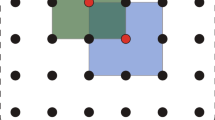Abstract.
In the solution of sensitivity equations of transient heat conduction, conventional methods may cause great numerical oscillations in results. This paper proposes a new algorithm to solve the sensitivity equations of linear and nonlinear transient heat conduction problems with Precise Time Integration (PTI), a new numerical scheme for ordinary differential equations. The PTI method has many numerical advantages, such as unconditional stability, high resolution, adaptivity to stiff problems. These advantages also improve the accuracy of the sensitivity analysis. The PTI method is extended to the sensitivity analysis of linear and nonlinear transient heat conduction and detailed formulae are derived. The matrix exponential of transient heat transfer is proved to be symmetrical, and then, a subdomain integration method is proposed to improve the computational efficiency greatly. Numerical examples show that the proposed method has high precision and avoids the numerical oscillation efficiently. It is concluded that new algorithms with the PTI method are suitable for the sensitivity analysis of linear and nonlinear transient heat conduction.
Similar content being viewed by others
Author information
Authors and Affiliations
Additional information
Received July 6, 2000 Revised manuscript received July 5, 2001
Rights and permissions
About this article
Cite this article
Gu, Y., Chen, B., Zhang, H. et al. A sensitivity analysis method for linear and nonlinear transient heat conduction with precise time integration. Struct Multidisc Optim 24, 23–37 (2002). https://doi.org/10.1007/s00158-002-0211-5
Issue Date:
DOI: https://doi.org/10.1007/s00158-002-0211-5




